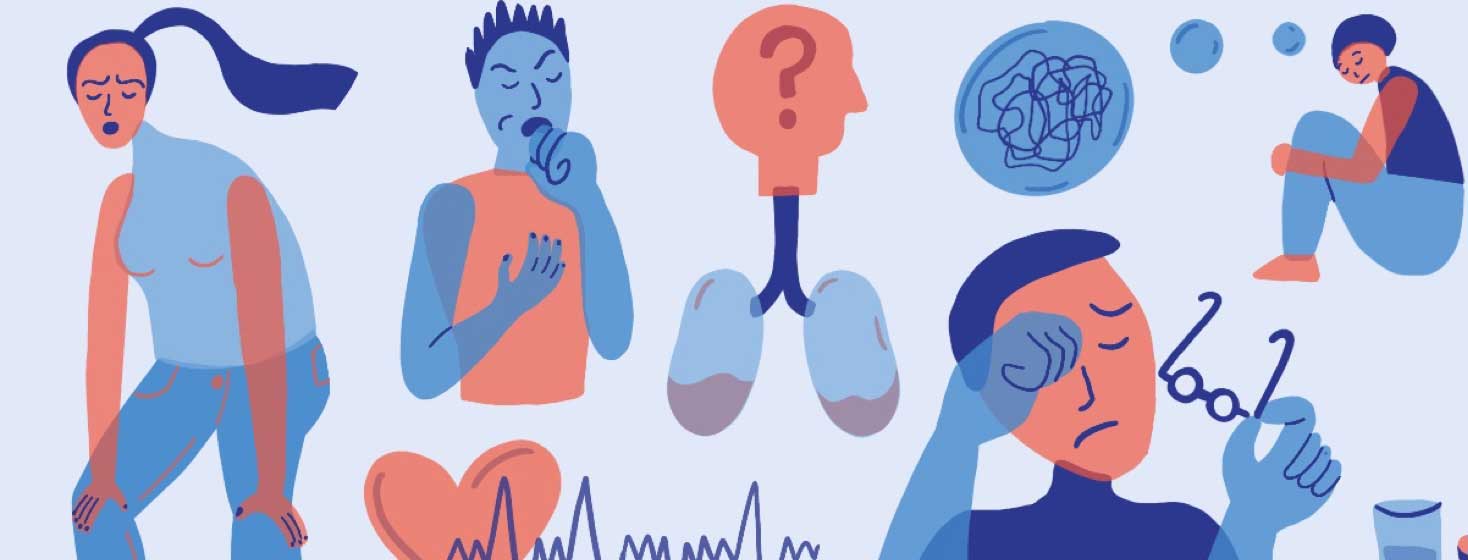Are You at Risk for MAC Lung Disease?
Reviewed by: HU Medical Review Board | Last reviewed: December 2022 | Last updated: October 2024
MAC lung disease is caused by Mycobacterium avium complex (MAC) germs. MAC germs are all around. They live in soil, water, household dust, and some food products. Humans and animals often have MAC germs in their body that do not cause infection. This is called being "colonized."1-3
Although MAC germs are everywhere, people rarely get sick from them. Their immune systems are often strong enough to prevent the MAC germs from growing and causing problems. However, if your immune system is weak, MAC germs can slowly grow over time and cause lung damage.1-3
What is MAC lung disease?
MAC lung disease is a type of nontuberculous mycobacterial (NTM) infection. Germs in this family are similar to those that cause the contagious lung disease tuberculosis (TB). However, NTM infections are different from TB. For example, MAC lung disease is not contagious.2-4
How common is it?
MAC lung disease is the most common NTM infection. About 80 percent of NTM infections are caused by MAC germs. Across the world, anywhere from 1 to 7 people per every 100,000 have MAC lung disease.3,4
It is hard to know the exact number of MAC lung disease cases. Some infections have to be reported to larger databases or departments of health. But MAC lung disease is not one of these reportable infections.5,6
Cases of MAC can be diagnosed and successfully treated without any long-term record of them. Some cases of MAC are misdiagnosed or missed entirely because symptoms are similar to other lung conditions.5,6
Also, since MAC germs are everywhere, a positive test result does not mean you have MAC lung disease. If your saliva and mucus (sputum) test positive for MAC germs, the sample may have been contaminated. It is also possible that MAC germs just live in your body without causing problems. All of these things can make it hard to track MAC lung disease cases.1,4
Who gets MAC lung disease?
All people are exposed to MAC germs, but only some people get MAC lung disease. Those who have a weakened immune system are at higher risk. This group includes:2-4,6,7
- People over the age of 65
- People with HIV or certain cancers
- People who take drugs that suppress their immune system
- People with autoimmune conditions like rheumatoid arthritis
In addition to these groups, people with a history of other lung conditions are also at higher risk of MAC lung disease. These conditions include:3,4,6
- Bronchiectasis (dilation and inflammation of the airways)
- Chronic obstructive pulmonary disease (COPD)
- Emphysema
- Asthma
- Past tuberculosis infection
- Cystic fibrosis
- Pneumoconiosis (lung disease caused by inhalation of dust or other irritants)
- Long-term or recurring pneumonia
About half of people with bronchiectasis have an NTM infection. People with COPD are 16 times more likely than those without it to have NTM. Some lung diseases, like COPD and emphysema, are caused or made worse by smoking.6
People who have changes to their genes (genetic mutations) that affect how well their immune system responds to germs also have a higher risk for MAC lung disease. And relatives of people who have MAC lung disease are more likely to have the condition. This suggests that there may be some genetic factors at play, too.3,5
There are also other trends in MAC lung disease in the United States. For example, people from coastal states are at higher risk. This includes places like Louisiana, California, and Florida.2,6
Types of MAC lung disease
There are a few different ways MAC lung disease can show up in your body. Two of the most common are:3,4
- Nodular bronchiectatic (NB) – NB affects the small airways and slowly damages them. This causes them to stretch out, leading to loose, scarred airways (called bronchiectasis). This stretching makes it harder to clear mucus and increases the risk of infection. NB MAC lung disease often affects older, thin women who are non-smokers.
- Fibrocavitary disease – This form is usually more severe and harder to treat. It creates holes in the lungs and can worsen quickly. Men who have smoked or have a smoking-related lung disease, such as emphysema, are at higher risk.
MAC germs can cause other issues, too. In healthy kids, MAC germs can cause swelling of the lymph nodes (lymphadenitis). In people with very weak immune systems due to HIV, MAC germs can be all over the body. This is called a disseminated MAC infection.3,4
Reducing risk and preventing relapse
It is hard to avoid coming into contact with MAC germs. However, there are some ways to reduce your risk of getting MAC lung disease or having it relapse after treatment. These ways include:2,8
- Avoid hot tubs or saunas where steamy air is recirculated.
- Use vents to clear out steam in bathrooms and kitchens.
- Set hot water heaters to at least 130 degrees Fahrenheit.
- Use a dust mask when gardening or in situations where you might breathe in irritants.
- Wet potting soil before using it to garden.
- Practice airway clearance techniques like controlled coughing or chest physical therapy.
- Avoid smoking and smoke exposure.
Each person’s situation is different, but it is important to follow your treatment plan if you have chronic lung disease. Talk with your doctor about your risk for MAC lung disease or its recurrence.

Join the conversation